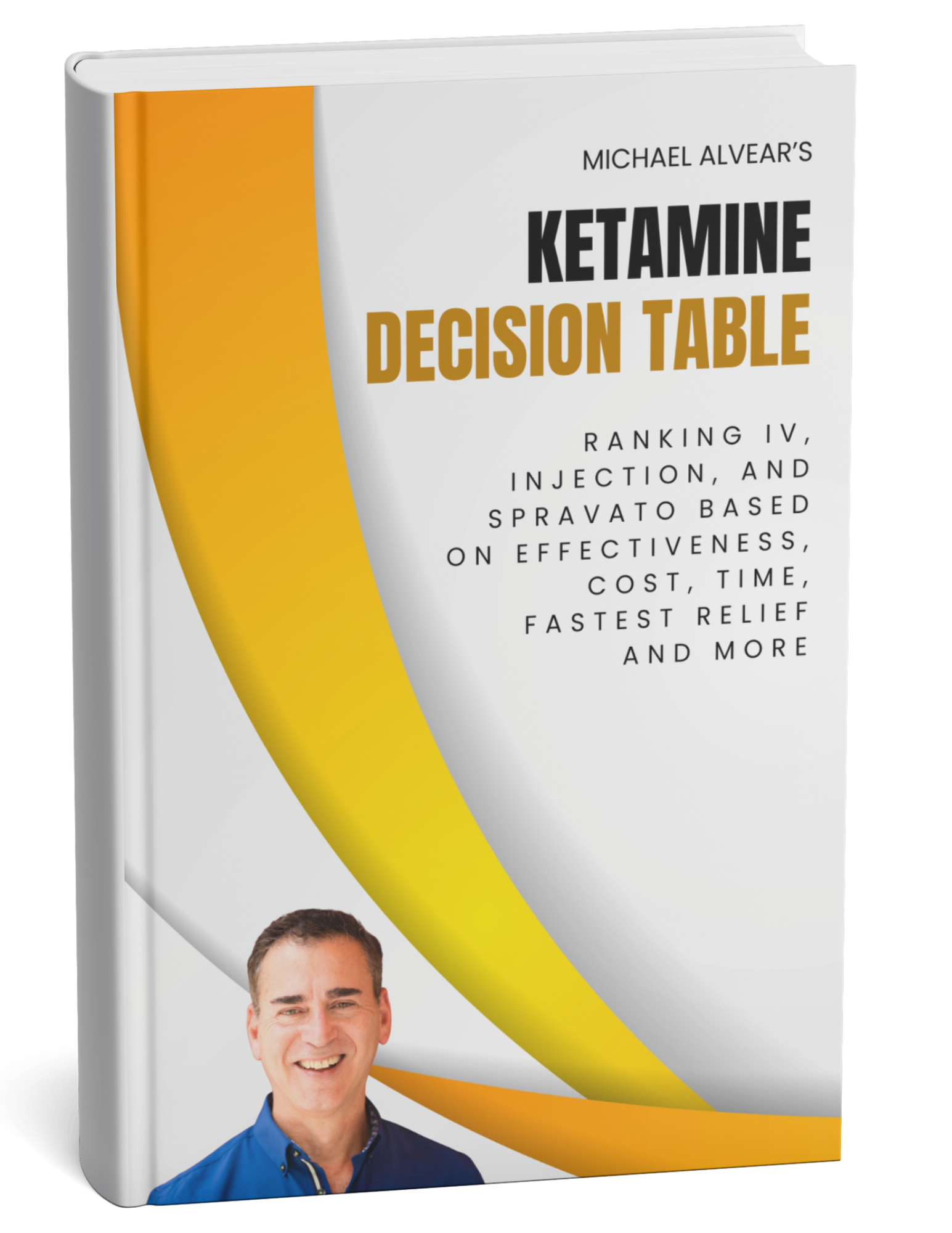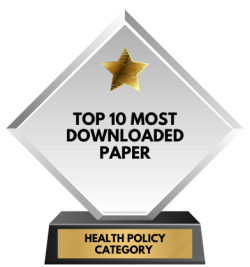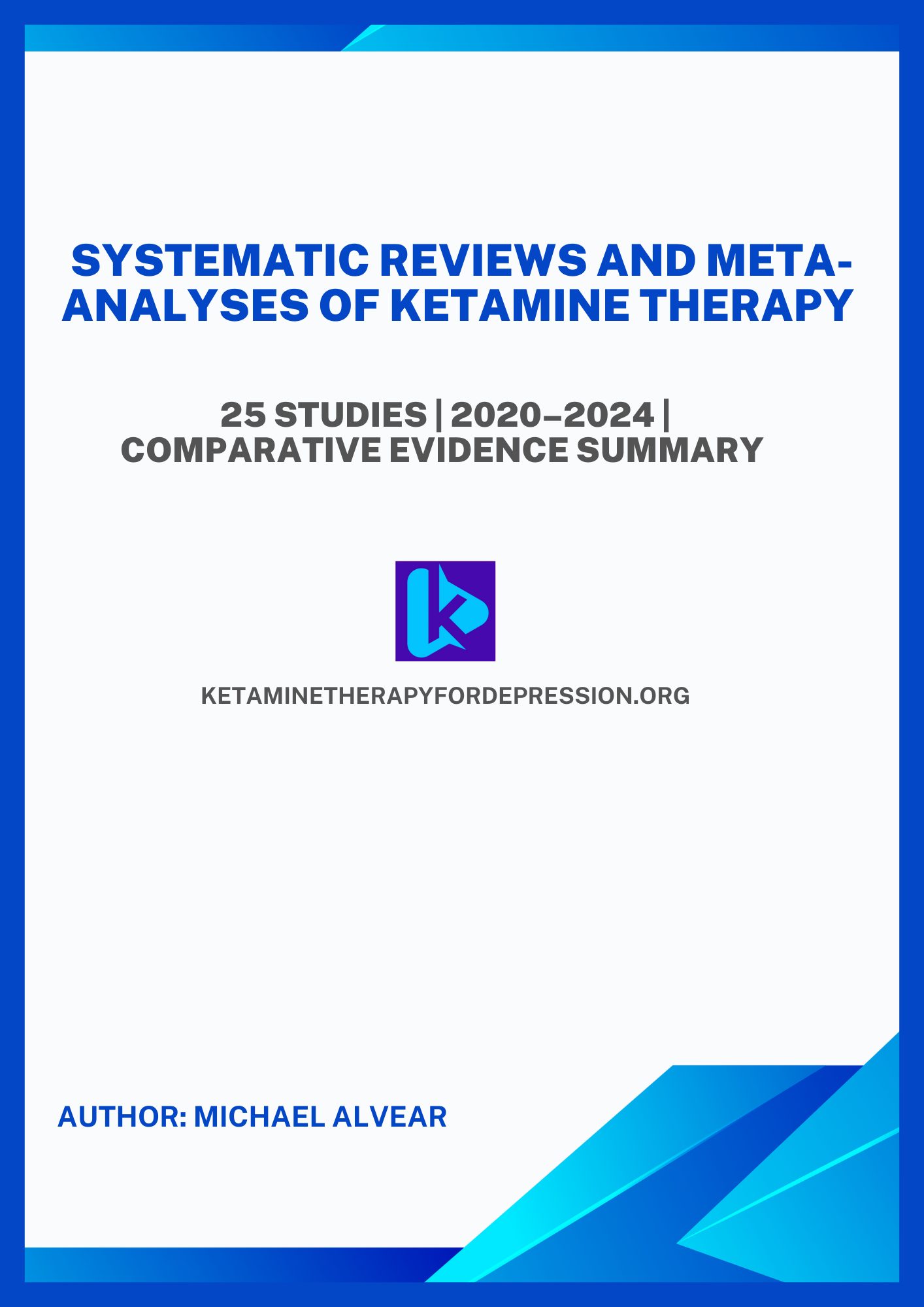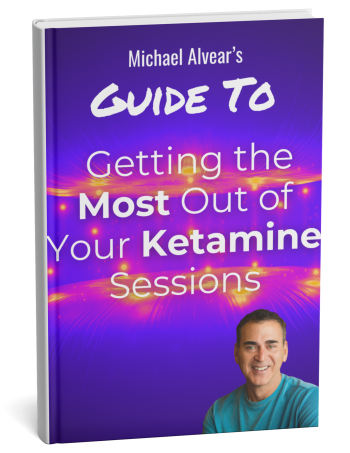Is Ketamine Therapy Right For You?
Independent Guidance to Help You Navigate Every Aspect of Your Decision
What Is Ketamine Therapy?
Find out what it does, how it works and what the experience feels like. Plus how many sessions you’ll need, how long they run, and the short-term side effects.
Will Ketamine Therapy End My Depression?
Studies show it offers the highest probability of remission. Find out how fast you might feel better and get an evidence-based list of treatments ranked from most effective to least.
Which Ketamine Treatment Is Right For Me?
What’s your priority—effectiveness, lowest cost, insurance coverage, fastest recovery time? Compare top choices by priority in an evidence-informed, side-by-side table built for real-world decisions.
How Much Will This Cost Me?
Get per-session and full-course costs for IV, injection, and Spravato. Find out what insurance, Medicare, and Medicaid covers, your out-of-pocket costs, and practical ways to lower it.
Can’t Decide Between IV, Injections, Or Spravato?
Use My Decision Table

This report ranks all three options—IV, injection, and Spravato—on effectiveness, cost, fastest relief, and more, giving you a clear framework to decide.
Downloads as PDF • 5 minute read
QUICK ANSWERS
Ketamine Therapy For Depression
How Is Ketamine Therapy Different From SSRIs And Other Antidepressants?
Ketamine therapy is different from antidepressants—and works faster—because it repairs the brain’s structure instead of altering brain chemistry. SSRIs work by increasing serotonin levels, which may slowly improve mood over time, but ketamine immediately crosses the blood-brain barrier, triggers a glutamate surge, and begins restoring damaged neural circuits. That physical repair process begins within hours, not weeks.
Antidepressants can take 4 to 8 weeks because they rely on indirect, downstream changes that slowly influence brain connectivity, if at all. Ketamine skips that delay by directly activating BDNF, reorganizing brain networks, and promoting the growth of new connections between cells.
Patients often feel sharper, calmer, and more emotionally regulated after their first or second session—not because of chemical mood shifts, but because their brain is functioning differently. This treatment does not reset brain chemistry; it rebuilds the brain’s communication systems.
Will I feel high, out of control, or scared during ketamine treatment—or is it more calm and contained than people expect?
The overwhelming majority of patients describe ketamine treatment as calm and contained regardless of how intense the session gets. That’s because ketamine creates a dissociative state where you feel physically and psychologically safe, even while accessing fear, grief, or trauma.
Some people do have vivid psychedelic visions, but many do not. What’s consistent is the strange emotional distance ketamine creates: you might relive painful memories or see disturbing imagery, but from behind a kind of glass. You can feel fear without panic, sadness without collapse.
The treatment setting is also quiet, structured, and closely supervised. Most patients feel groggy, introspective, or emotionally raw afterward—but not unsafe, not out of control.
What’s The Difference Between IV Ketamine And Spravato (The Esketamine Nasal Spray)?
Spravato is FDA-approved only for patients with treatment-resistant depression who’ve failed at least two prior antidepressants, and it must be administered in a REMS-certified clinic under strict supervision. IV ketamine is off-label but backed by decades of research, isn’t limited to REMS facilities, and is available to patients with a broader range of diagnoses.
IV ketamine is racemic ketamine administered by infusion with precise dosing based on body weight. Spravato is esketamine delivered through nasal spray in fixed doses regardless of weight or sensitivity. IV delivers 100% of the medication into your bloodstream while Spravato averages 48% bioavailability.
There are no head-to-head trials, but systematic reviews found that IV ketamine is up to five times more effective than Spravato at reducing depressive symptoms and 2.5 times more likely to bring patients into remission.
What Are The Different Ways To Take Ketamine—And How Do I Choose The Right One?
Ketamine is typically delivered through IV infusion, intramuscular (IM) injection, esketamine nasal spray (Spravato), or oral/sublingual forms. Each method has major trade-offs in effectiveness, cost, and accessibility.
IV infusion is the most effective and fastest-acting, with nearly 100% bioavailability and real-time dose control. But it’s always self-pay and often runs $400–$800 per session. IM injection is more affordable than IV and works faster than the nasal spray, but it offers less dosing flexibility.
Choosing a method isn’t just about preference. It often comes down to real-world barriers: cost, insurance coverage, clinic access, and how quickly you need relief.
Is Ketamine Therapy Covered By Insurance—And What Will I Have To Pay Out Of Pocket?
Ketamine therapy is not covered by insurance—except for Spravato, the esketamine nasal spray. IV infusions and injections are considered “off-label,” so they are excluded from coverage by commercial insurance, Medicare, and Medicaid. Spravato, by contrast, is FDA-approved and at least partially covered by most commercial insurers.
Despite this coverage, ketamine remains a very expensive treatment across the board—with or without insurance. Without insurance, the 14-session Spravato protocol costs about $24,000. With coverage, your out-of-pocket cost typically ranges from $7,691 to $9,451 depending on your deductible, copays, and coinsurance.
IV ketamine and injection therapy cost less—around $6,000 and $3,380 respectively for a full protocol—but must be paid entirely out of pocket.
PEER-VALIDATED KETAMINE RESEARCH


SSRN (Academic Research Network)
How Can You Be Sure Ketamine Therapy Actually Works?

I pulled together 25+ systematic reviews from the last five years into one report—so you don’t have to rely on hype, guesses, or anecdotes. This is the highest level of real-world evidence we have.
Inside My Report You’ll Find
- What percent of patients enter remission—broken down by delivery method
- Which method is most effective—IV, injection, or Spravato nasal spray
- How fast ketamine can work to reduce or end symptoms
- Which combinations (like psychotherapy) may enhance response
- And a lot more…
Verified by the Platforms That Matter
This research summary report has been published across four trusted platforms that host peer-reviewed or open science content, including:
– Published ketamine research on Zenodo
– Ketamine evidence summary hosted on SSRN
– Scientific report on ketamine outcomes on Figshare
– Evidence-based ketamine therapy report on OSF
View the PDF Report Here:


